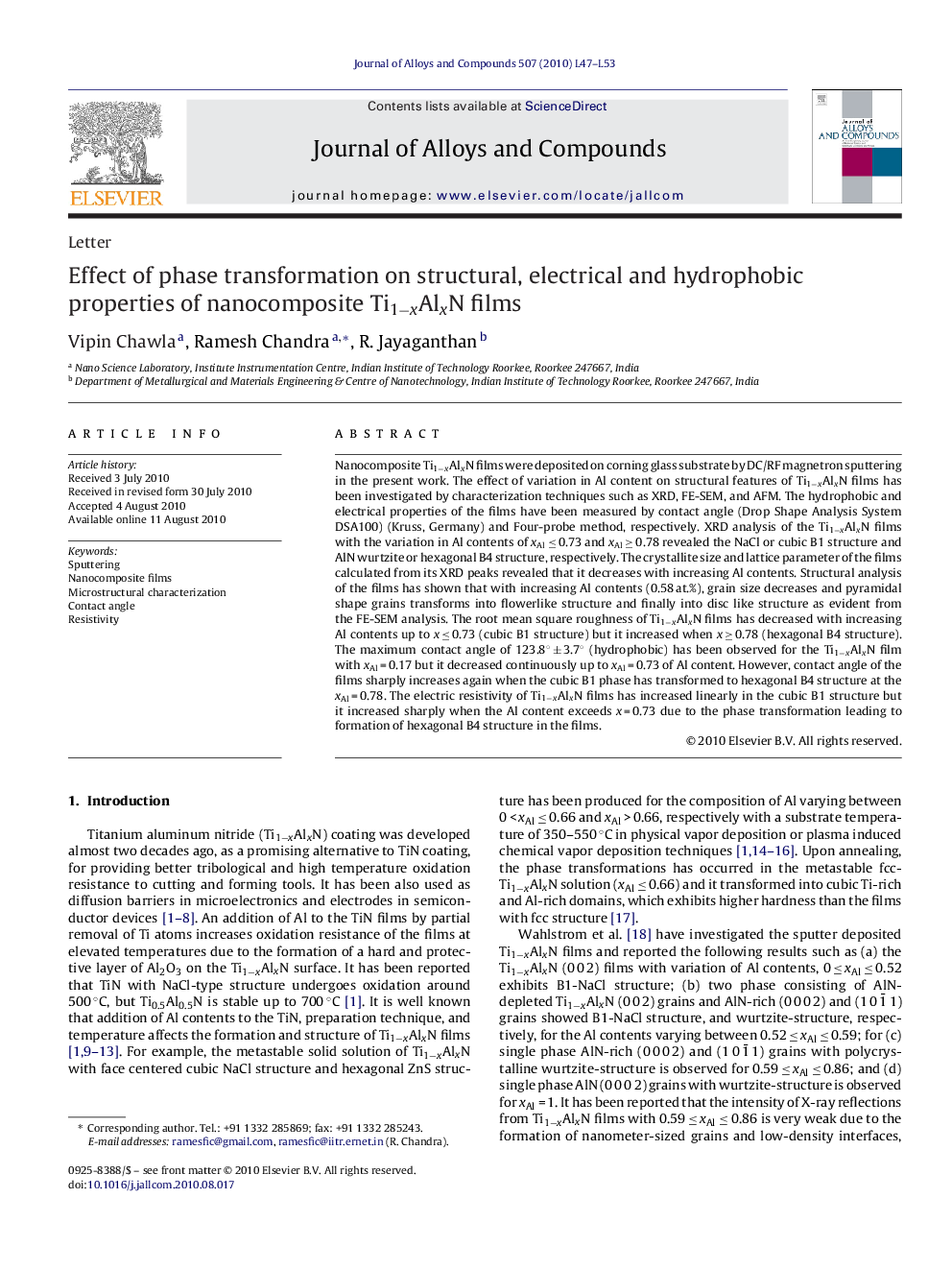| Article ID | Journal | Published Year | Pages | File Type |
|---|---|---|---|---|
| 1618000 | Journal of Alloys and Compounds | 2010 | 7 Pages |
Abstract
Nanocomposite Ti1âxAlxN films were deposited on corning glass substrate by DC/RF magnetron sputtering in the present work. The effect of variation in Al content on structural features of Ti1âxAlxN films has been investigated by characterization techniques such as XRD, FE-SEM, and AFM. The hydrophobic and electrical properties of the films have been measured by contact angle (Drop Shape Analysis System DSA100) (Kruss, Germany) and Four-probe method, respectively. XRD analysis of the Ti1âxAlxN films with the variation in Al contents of xAl â¤Â 0.73 and xAl â¥Â 0.78 revealed the NaCl or cubic B1 structure and AlN wurtzite or hexagonal B4 structure, respectively. The crystallite size and lattice parameter of the films calculated from its XRD peaks revealed that it decreases with increasing Al contents. Structural analysis of the films has shown that with increasing Al contents (0.58 at.%), grain size decreases and pyramidal shape grains transforms into flowerlike structure and finally into disc like structure as evident from the FE-SEM analysis. The root mean square roughness of Ti1âxAlxN films has decreased with increasing Al contents up to x â¤Â 0.73 (cubic B1 structure) but it increased when x â¥Â 0.78 (hexagonal B4 structure). The maximum contact angle of 123.8° ± 3.7° (hydrophobic) has been observed for the Ti1âxAlxN film with xAl = 0.17 but it decreased continuously up to xAl = 0.73 of Al content. However, contact angle of the films sharply increases again when the cubic B1 phase has transformed to hexagonal B4 structure at the xAl = 0.78. The electric resistivity of Ti1âxAlxN films has increased linearly in the cubic B1 structure but it increased sharply when the Al content exceeds x = 0.73 due to the phase transformation leading to formation of hexagonal B4 structure in the films.
Related Topics
Physical Sciences and Engineering
Materials Science
Metals and Alloys
Authors
Vipin Chawla, Ramesh Chandra, R. Jayaganthan,
